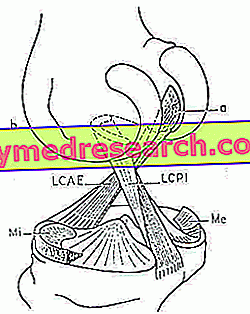As an example of bulbous drugs we can consider Scilla, a cardioactive drug characterized by active principles (bufadienolides and cardienolides) that can be encoded with specific reagents.
The onion is a bulb drug characterized by active sulfur principles, with expectorant power, while garlic, of the same family, has antihypertensive power. Drugs, of course, do not present themselves as we imagine, but with dried biological structures, therefore with all the histological and organographic difficulties that can occur in their recognition. Bulb drugs can occur at LISTARELLE, SPICCHI or WHOLE. In case they are presented in strips, Scilla's recognition is almost immediate; in other cases, if the pharmacognostic criteria of drying are not respected, it could also be other drugs, such as onion, in slices or scales. This recognition process, which implements knowledge of a botanical, organographic and histological nature, is often associated with drug quality control, thus completing histochemical investigations.
The process obviously becomes more complicated for pulverized drugs, a presentation method typical of pharmacognosy, which presents greater difficulty in recognizing macroscopic botanical order. Examples of powdered drugs are both plant-based, such as starch (a whitish-colored drug), and mineral, like fossil flour. The latter is characterized by the external siliceous structure of diatoms and is often used to adulterate other types of drugs. In fact, fossil flour has macroscopic characteristics very similar to starch and for this reason is used in frauds; however, its presence is recognizable because it does not stain easily in the presence of iodine. Starch, on the other hand, in the presence of iodine-iodinated alcoholic solutions, takes on a bluish or violet color and is thus easily distinguishable from fossil flour.
Under the microscope, it is possible to identify the drug starch because its granules, typical of each plant species, are therefore recognized, therefore of the source of derivation of the drug.
Even fossil flour, if observed under a microscope, is easily ascribable to the source of origin; thanks to the identification and synoptic tables, it is possible to identify the exoskeletons of the different types of diatoms.
Another pulverized drug is clay, of mineral origin, which appears as a whitish powder. However, there are different types: some rich in iron (reddish), others rich in aluminum (yellowish), mean that their recognition in a mixture of powders is more immediate. Through morphological and chemical investigations, the clay can be identified and easily discriminated compared to the others; its grain size is different from both fossil flour and starch and above all it has a very different reactivity to histochemical reagents. Lycopodium, the same pollen, camala, luppolino and goa are other types of pulverized drugs.



